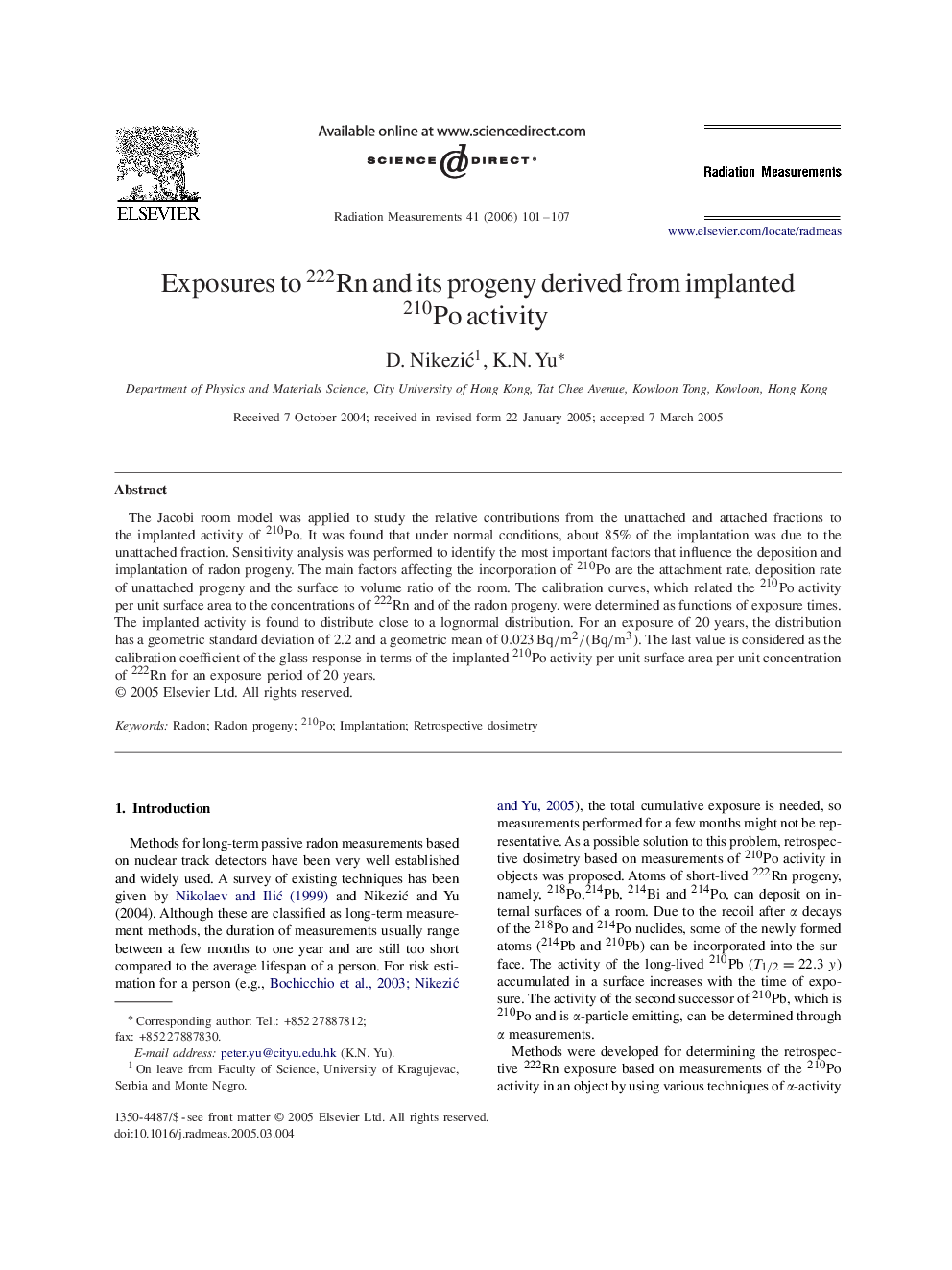| Article ID | Journal | Published Year | Pages | File Type |
|---|---|---|---|---|
| 1884751 | Radiation Measurements | 2006 | 7 Pages |
The Jacobi room model was applied to study the relative contributions from the unattached and attached fractions to the implanted activity of 210Po. It was found that under normal conditions, about 85% of the implantation was due to the unattached fraction. Sensitivity analysis was performed to identify the most important factors that influence the deposition and implantation of radon progeny. The main factors affecting the incorporation of 210Po are the attachment rate, deposition rate of unattached progeny and the surface to volume ratio of the room. The calibration curves, which related the 210Po activity per unit surface area to the concentrations of 222Rn and of the radon progeny, were determined as functions of exposure times. The implanted activity is found to distribute close to a lognormal distribution. For an exposure of 20 years, the distribution has a geometric standard deviation of 2.2 and a geometric mean of 0.023Bq/m2/(Bq/m3). The last value is considered as the calibration coefficient of the glass response in terms of the implanted 210Po activity per unit surface area per unit concentration of 222Rn for an exposure period of 20 years.
